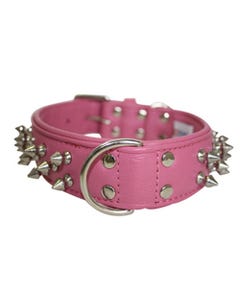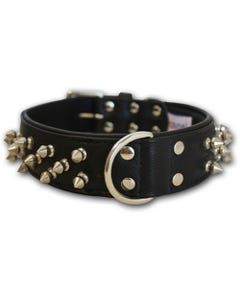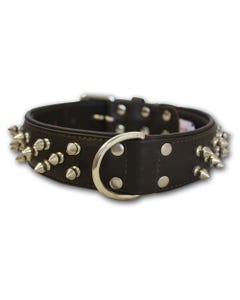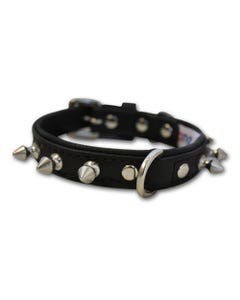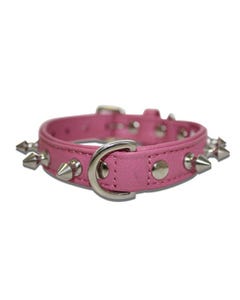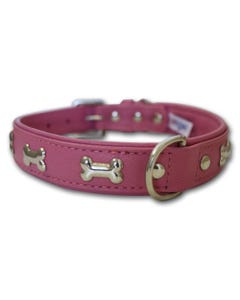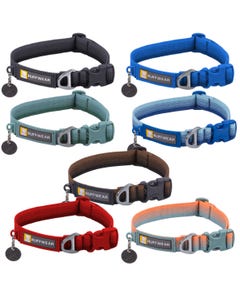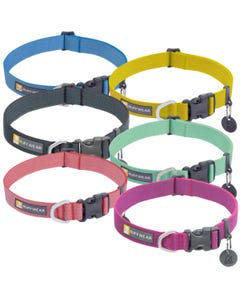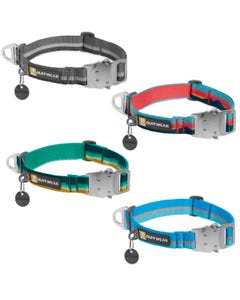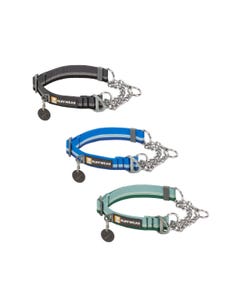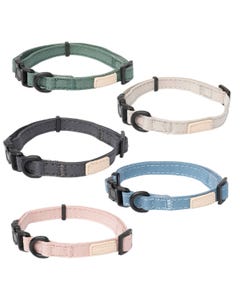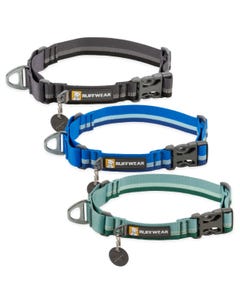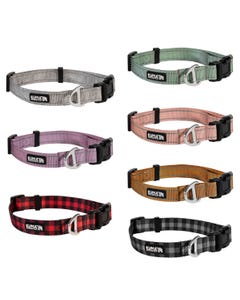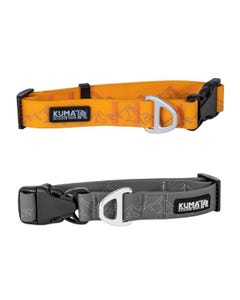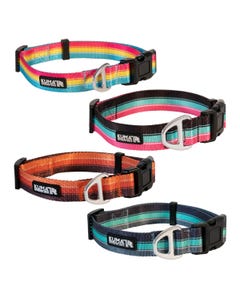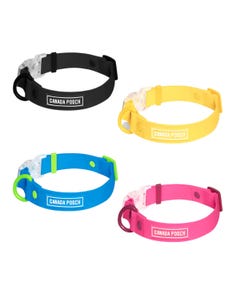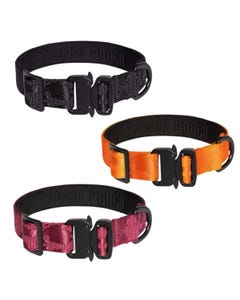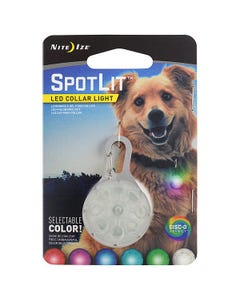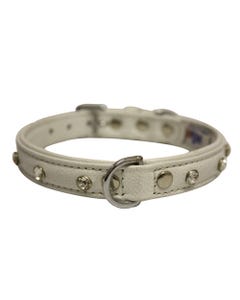Dog Collar FAQs
What is the best type of dog collar?
The best type of dog collar depends on your dog's size, breed, and specific needs. Popular options include flat collars, martingale collars, and harnesses. It's important to choose a collar that is comfortable for your dog, has the necessary hardware, such as a d ring, and fits correctly.
Do vets recommend dog collars?
Yes, most vets recommend that dogs wear collars for identification purposes. However, some vets may recommend specific types of collars, such as breakaway collars for cats or harnesses for dogs with certain health conditions.
Should dogs sleep with their collars on?
It is generally safe for dogs to sleep with their collars on. However, some owners prefer to remove their dog's collar at night to prevent any accidental choking or injury. If you choose to leave your dog's collar on while they sleep, make sure it is properly fitted and not too tight.
What are the best dog collars that dogs can't get out of?
Some of the best dog collars that dogs can't get out of include martingale collars, head collars, and harnesses. These types of collars provide greater control over your dog and are less likely to slip off or become loose.
Do dogs like their collars off?
Some dogs may prefer to have their collars off, while others may not mind wearing them. It's important to regularly check your dog's collar for any signs of discomfort, such as rubbing or irritation. If your dog appears to be uncomfortable, consider adjusting the collar or trying a different type of collar.
Are dog collars safe?
Dog collars can be safe if they are properly fitted and used correctly. It's important to regularly check your dog's collar for any signs of wear or damage and adjust it as it grows or changes shape. Additionally, it's important to use collars appropriate for your dog's size and strength to prevent accidental choking or injury.
Shop Dog Collars in Canada
Your dog's collar is her identity. It holds ID tags, connects to your leash, and allows you to hold onto your pooch when you need to respond quickly. A dog collar is the first accessory you'll need to buy your dog, which they will use daily.
Choosing the best dog collar comes down to style, function, and material. Depending on your dog's lifestyle, you may need more than one dog collar for different activities. Check out our huge selection of the best dog collars, such as martingale collars, LED, and leather dog collars, to find the perfect dog collar for your pooch.
Your dog's collar is her identity. The best dog collar holds ID tags, connects to your leash, and allows you to hold onto your pooch when you need to respond quickly. A dog collar is the first accessory you'll need to buy your dog, and it's something they will use every day.
Choosing the best dog collars Canada comes down to style, function, and material. Depending on your furry friend's lifestyle, you may need more than one collar for different activities. You might want one that stands up to the elements, one made from material that doesn't collect fur, and another that features patterns that match the rest of your dog's gear.
Check out our full selection of dog martingale training collars, LED dog collars, leather dog collars, and more to find the perfect dog collar for your pooch.
Dogs are our best friends; we’ll stop at nothing to protect them from straying or getting lost. That’s why dog collars are one of the most important dog-walking accessories you’ll buy for them!
They serve a couple of functional purposes, such as providing a place to clip a dog leash to keep your dog close and under control while out on walks.
Best Type of Collars for Dogs
The type of collar you choose depends on your dog’s needs and style. Homes Alive Pets has a wide selection of different collars for separate occasions. When shopping for a collar, you should consider the colours, materials such as nylon or leather, and styles that best suit your dog’s size and needs.
The best dog collar also has hooks that allow you to connect his licenses and dog ID tags to identify your dog if he ever goes missing.
LED dog collars are a great option if you and your dog enjoy spending time outdoors after the sun goes down! These can help you keep an eye on your dog during darker hours and offer your dog extra visibility with the light’s illumination.
Choose from the best dog collars Canada from brands like Woof Concept, RC Pets Dog Collars, Rogz, and Ruffwear. Your doggo will look and walk his absolute best with the right collar!
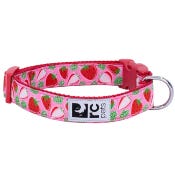 Basic Collars
Basic Collars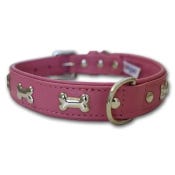 Leather Collars
Leather Collars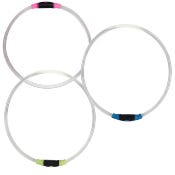 Reflective & LED Collars
Reflective & LED Collars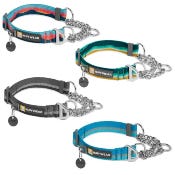 Martingale Collars
Martingale Collars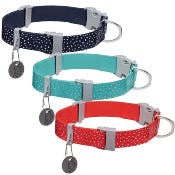 Waterproof Collars
Waterproof Collars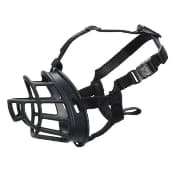 Muzzles
Muzzles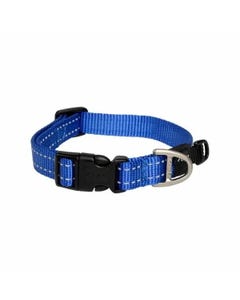
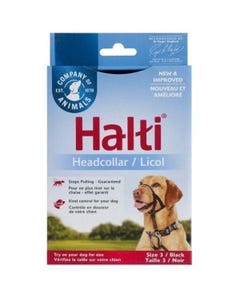
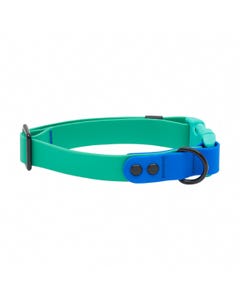
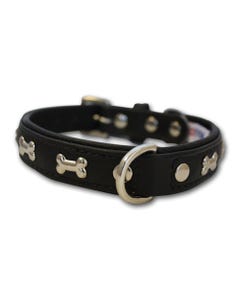
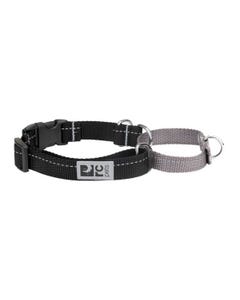 RC Pets Primary Web Training Clip CollarList Price: $19.00 Starting From: $17.99 You Save: $1.01 (5%)
RC Pets Primary Web Training Clip CollarList Price: $19.00 Starting From: $17.99 You Save: $1.01 (5%)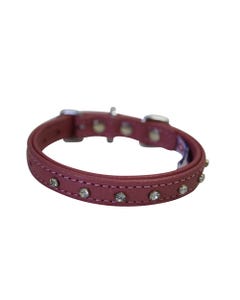
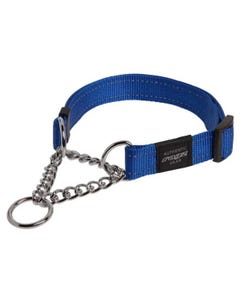
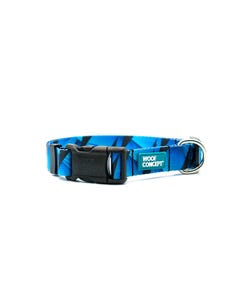 Woof Concept Ikonic Dog Collar Collection - Apex 2List Price: $25.99 Starting From: $24.99 You Save: $1.00 (4%)
Woof Concept Ikonic Dog Collar Collection - Apex 2List Price: $25.99 Starting From: $24.99 You Save: $1.00 (4%)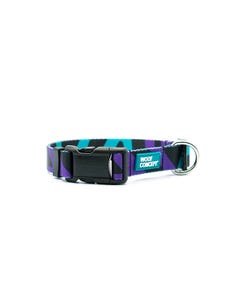 Woof Concept Ikonic Dog Collar Collection - Disco 2List Price: $25.99 Starting From: $24.99 You Save: $1.00 (4%)
Woof Concept Ikonic Dog Collar Collection - Disco 2List Price: $25.99 Starting From: $24.99 You Save: $1.00 (4%)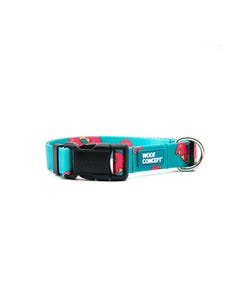 Woof Concept Ikonic Dog Collar Collection - Five-OList Price: $25.99 Starting From: $24.99 You Save: $1.00 (4%)
Woof Concept Ikonic Dog Collar Collection - Five-OList Price: $25.99 Starting From: $24.99 You Save: $1.00 (4%)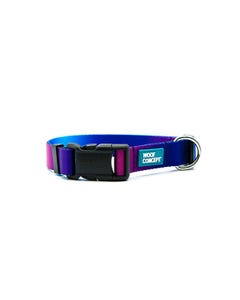 Woof Concept Ikonic Dog Collar Collection - MysticList Price: $25.99 Starting From: $24.99 You Save: $1.00 (4%)
Woof Concept Ikonic Dog Collar Collection - MysticList Price: $25.99 Starting From: $24.99 You Save: $1.00 (4%)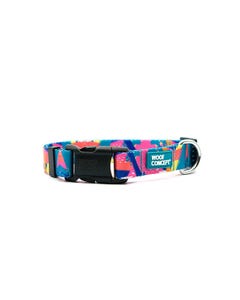 Woof Concept Ikonic Dog Collar Collection - UltraList Price: $25.99 Starting From: $24.99 You Save: $1.00 (4%)
Woof Concept Ikonic Dog Collar Collection - UltraList Price: $25.99 Starting From: $24.99 You Save: $1.00 (4%)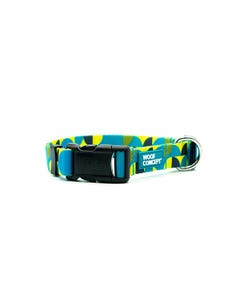 Woof Concept Ikonic Dog Collar Collection - NOMADIC X BC SPCAList Price: $25.99 Starting From: $24.99 You Save: $1.00 (4%)
Woof Concept Ikonic Dog Collar Collection - NOMADIC X BC SPCAList Price: $25.99 Starting From: $24.99 You Save: $1.00 (4%)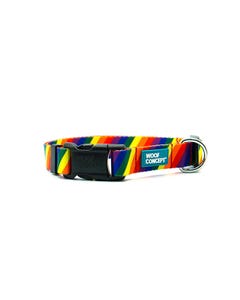 Woof Concept Ikonic Dog Collar Collection - Pride 2List Price: $25.99 Starting From: $24.99 You Save: $1.00 (4%)
Woof Concept Ikonic Dog Collar Collection - Pride 2List Price: $25.99 Starting From: $24.99 You Save: $1.00 (4%)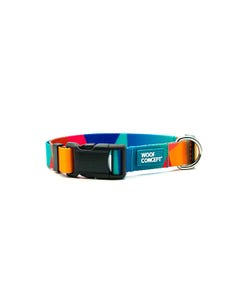 Woof Concept Ikonic Dog Collar Collection - Polygon 2List Price: $25.99 Starting From: $24.99 You Save: $1.00 (4%)
Woof Concept Ikonic Dog Collar Collection - Polygon 2List Price: $25.99 Starting From: $24.99 You Save: $1.00 (4%)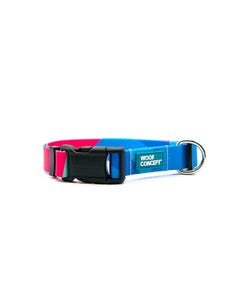 Woof Concept Ikonic Dog Collar Collection - PrismList Price: $25.99 Starting From: $24.99 You Save: $1.00 (4%)
Woof Concept Ikonic Dog Collar Collection - PrismList Price: $25.99 Starting From: $24.99 You Save: $1.00 (4%)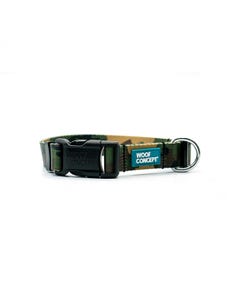 Woof Concept Ikonic Dog Collar Collection - WoodlandList Price: $25.99 Starting From: $24.99 You Save: $1.00 (4%)
Woof Concept Ikonic Dog Collar Collection - WoodlandList Price: $25.99 Starting From: $24.99 You Save: $1.00 (4%)